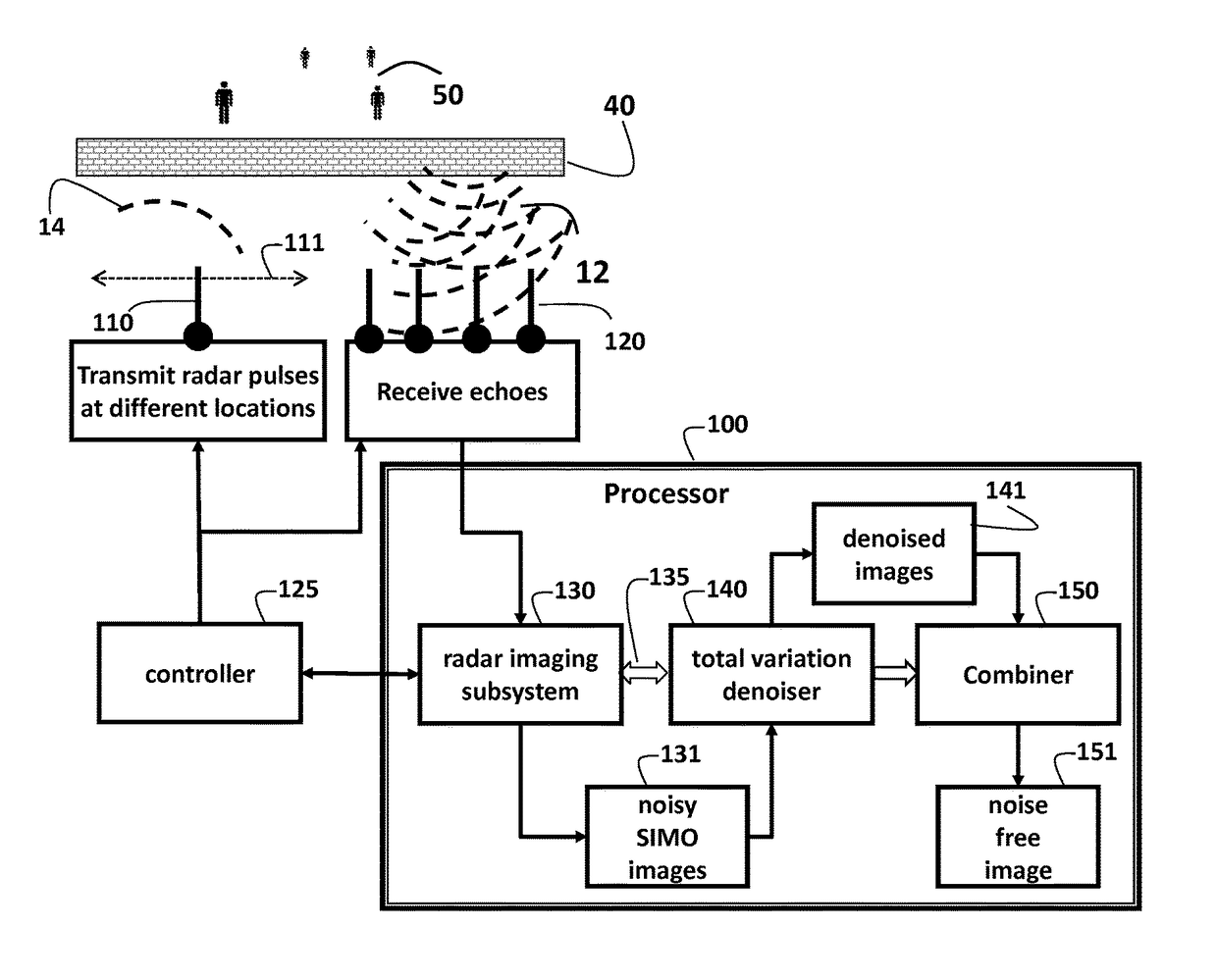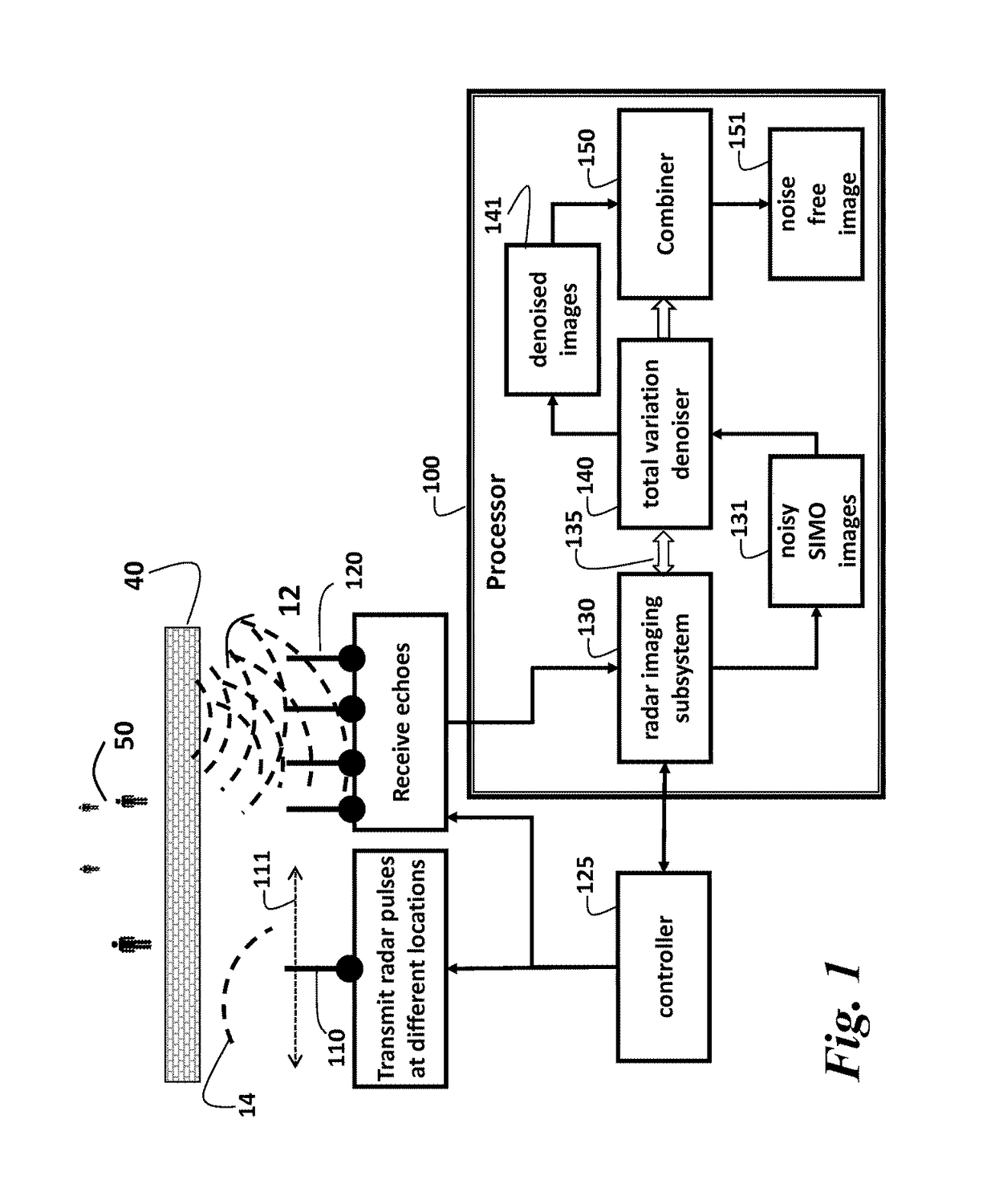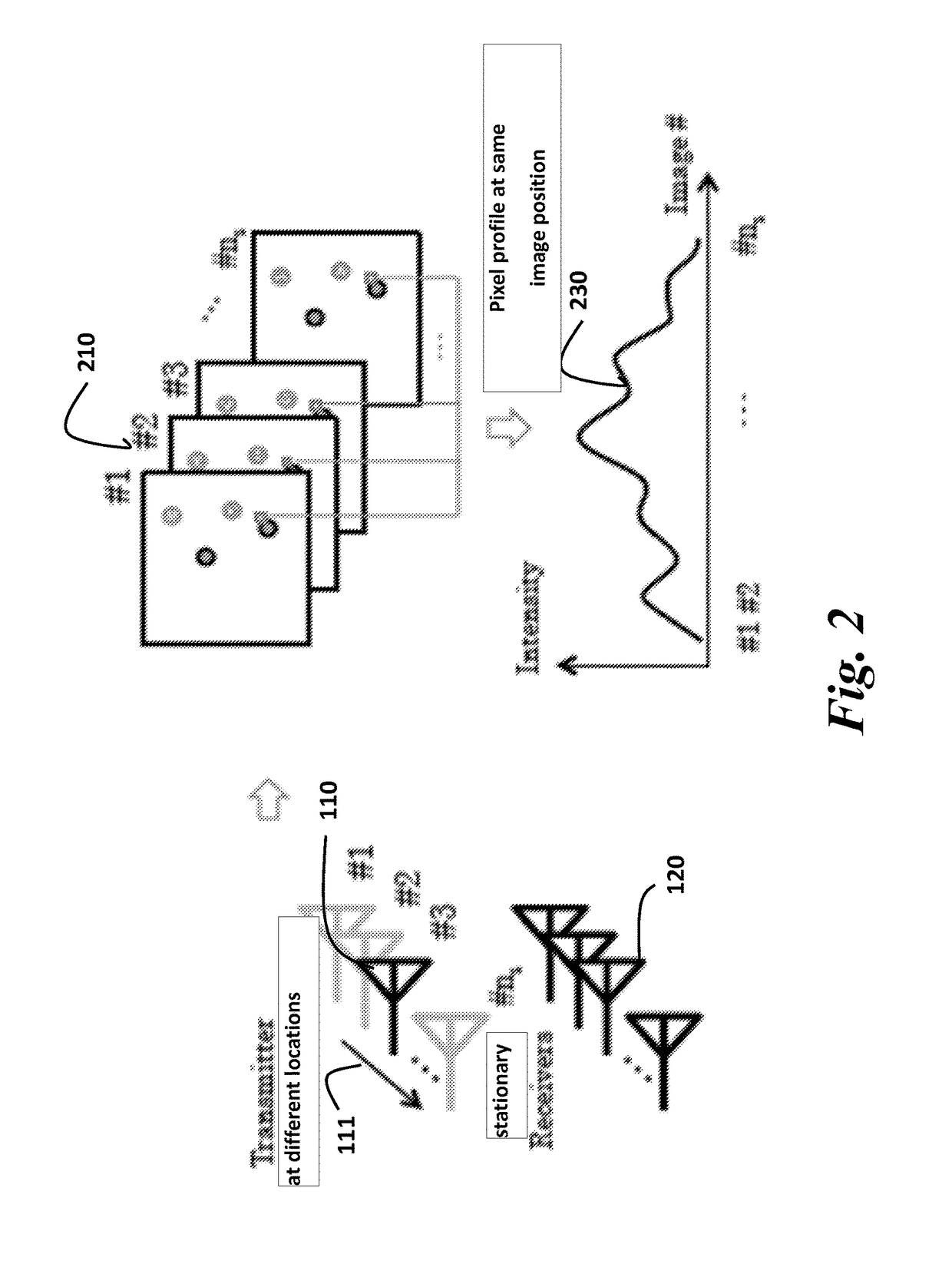System and method for through-the-wall-radar-imaging using total-variation denoising
a technology of total variation and denoising, applied in the field of denoising images, can solve problems such as noise reconstructed images, and achieve the effect of improving denoising
- Summary
- Abstract
- Description
- Claims
- Application Information
AI Technical Summary
Benefits of technology
Problems solved by technology
Method used
Image
Examples
Embodiment Construction
System Setup
[0012]As shown in FIG. 1, the embodiments of our invention describe a system and method for determining a noise free image of a scene located behind a wall 40. Typically, the scene includes reflectors, such as objects, e.g., people 50. Details of the system setup, the scene and the effect of the wall are described in the related application, U.S. Publication No. 20150022390, “Method and System for Through-the-Wall Imaging using Sparse Inversion for Blind Multi-Path Elimination,” Mansour, Jul. 22, 2013, incorporated herein by reference.
[0013]The system includes a transmit antenna 110 that emits a radar pulse 14 from different locations 111 in front of the wall 40. The radar pulses propagate through the wall and are reflected as echoes 12. Typically, the reflectors are objects 50, such as people. However, it is understood that invention can be applied to any type of behind the wall scene. A set of stationary receive antennas 120 acquire the echoes 12 that corresponding to ...
PUM
 Login to View More
Login to View More Abstract
Description
Claims
Application Information
 Login to View More
Login to View More - R&D
- Intellectual Property
- Life Sciences
- Materials
- Tech Scout
- Unparalleled Data Quality
- Higher Quality Content
- 60% Fewer Hallucinations
Browse by: Latest US Patents, China's latest patents, Technical Efficacy Thesaurus, Application Domain, Technology Topic, Popular Technical Reports.
© 2025 PatSnap. All rights reserved.Legal|Privacy policy|Modern Slavery Act Transparency Statement|Sitemap|About US| Contact US: help@patsnap.com



